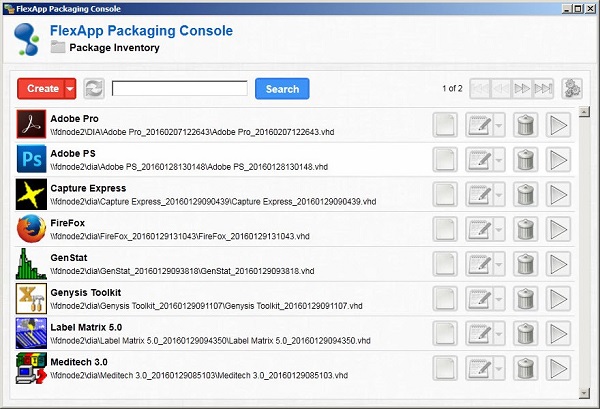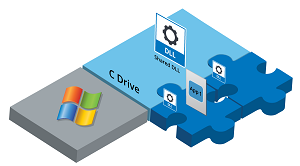Advanced Desktop Application Layering
FlexApp is innovative application layering technology that many organizations are adopting to streamline the delivery of Windows desktop applications. Users receive their applications exactly when and where they need them and use the applications as if they are natively installed into the Windows Operating System. With FlexApp, applications are easily installed initially via the FlexApp Packaging console, and they instantly become portable application layers that can be snapped into Windows desktop sessions just in time at user logon.
With FlexApp, Desktop Administrators manage applications independently of desktop base images. FlexApp greatly minimizes the number of base images that are maintained and updated and can even help you achieve single image management. With FlexApp’s fully automatic Micro Isolation technology, applications can be maintained in separate layers (VHDs and/or VMDKs) without the need to worry about application file, DLL, or Registry conflicts.
The End User Experience
At user logon, FlexApp layered applications are delivered to users in seconds based on their desktop machine name, department, group, username or other context-aware criteria. Applications are portable and can be delivered to any desktop the user logs onto including virtual, Citrix Virtual App/RDSH sessions, and physical desktops. When FlexApp is used with the full features of ProfileUnity User Environment Management, user desktop settings, policies, profiles, and applications are delivered independent of the base desktop OS image. FlexApp enables fully non-persistent VDI, easier management of Citrix Virtual App and RDSH servers, and streamlined management of physical PCs – all while boosting user productivity by delivering a robust user experience without sacrificing features or usability.
The FlexApp Packaging Console
FlexApp layered applications are easily installed once via the FlexApp Packaging Console and are instantly made into fully portable application layers via VHD and/or VMDK storage. The FlexApp Packaging console is intuitive and communicates in real-time with the ProfileUnity Management Console to instantly make applications available for delivery to users. FlexApp takes all the guesswork out of application packaging by automatically provisioning expandable storage volumes.
The Filter Driver is a simple kernel mode service responsible for communication between the host OS and the layers. Basic tasks include, creating virtual keys, files and folders at a basic level within the host OS.
The Rules Engine is an advanced user-mode based architecture responsible for directing and controlling what the Filter Driver creates within the host OS. Essentially, identifying, preparing and lining up all virtual registry, file and folder requirements between the applications within the layers and the host OS.
The new Micro Isolation feature within FlexApp is an integral part of the Rules Engine that engages automatically to resolve inter-layer conflicts. The applications within the FlexApp Layer are still perceived as native to the OS and other application layers.
FlexApp intuitively and automatically detects and resolves application conflicts by redirecting the layered applications' request for a file or registry key to its own layer so two versions of the same file or registry key can coexist. Without Micro-isolation when creating independent layers for an application, each layer is unaware of other layers and can potentially conflict at the file and registry level causing failures. Normally the only way to solve application conflicts is to combine the conflicting layers into one large layer. This creates management problems, when you can’t just update a single layer and you have to deal with larger layers. However, managing larger layers -- with multiple applications inserted into one layer which cannot be managed granularly -- essentially recreates the original problem of having everything in the base image; which is an issue that needs to be resolved for efficient and streamlined application delivery.


